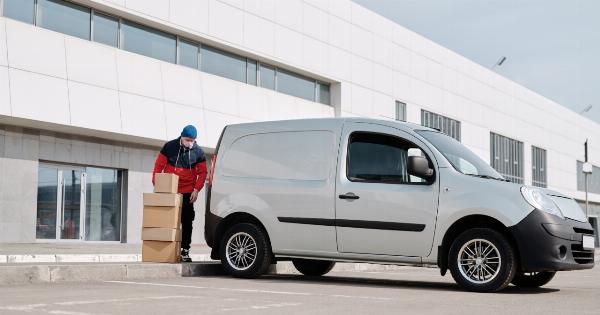Operating any type of vehicle comes with inherent risks, and it is crucial to prioritize safety at all times.
This is particularly true when it comes to 65-horsepower vehicles, as they often have unique characteristics that require specific safety measures. One of the most significant risks associated with these vehicles is the possibility of falling or tipping over, which can lead to serious injuries or even fatalities.
H2: Understanding the Risks
Before diving into the safety measures, it is important to understand the risks associated with operating 65-horsepower vehicles.
These vehicles are often used for various purposes such as agriculture, construction, or off-road adventures, which means they are frequently operated in challenging terrains and conditions. The combination of their power, size, and off-road capabilities demands extra caution to prevent falls and accidents.
H2: Regular Maintenance and Inspections
One of the fundamental safety measures for 65-horsepower vehicles is to ensure regular maintenance and inspections are carried out.
Regular maintenance helps identify potential issues before they become hazards, preventing falls caused by mechanical failures. Here are some key maintenance tasks:.
- Check tires for proper inflation and tread conditions.
- Inspect brakes to ensure they are in good working order.
- Regularly change the oil and filters according to the manufacturer’s recommendations.
- Inspect all electrical components and wiring for any signs of wear or damage.
- Check the suspension system and steering components for proper functioning.
- Ensure all lights and indicators are working correctly.
Additionally, it is crucial to schedule regular professional inspections to identify any potential issues that may not be immediately visible to the untrained eye.
H2: Proper Operator Training
Another essential safety measure is to provide proper operator training for individuals using 65-horsepower vehicles. A well-trained operator is more likely to identify and avoid risky situations, reducing the chances of falls. Training should cover:.
- Understanding the vehicle’s capabilities, limitations, and center of gravity.
- Knowing how to maneuver on different terrains and surfaces.
- Appropriate speed control and braking techniques.
- Proper load management and securing methods.
- Recognizing and responding to emergency situations.
Operator training should be conducted by experienced instructors who can provide comprehensive guidance on safe operation practices for 65-horsepower vehicles.
H2: Use of Protective Equipment
Wearing proper protective equipment is crucial to minimize the risk of injuries in the event of falls from 65-horsepower vehicles. The following protective gear should be worn at all times:.
- A helmet designed for off-road activities to protect the head and reduce the risk of traumatic brain injuries.
- Full-face goggles or protective eyewear to shield the eyes from debris and enhance visibility.
- Sturdy boots with ankle support to protect the feet and enhance stability.
- Gloves with proper grip and padding for enhanced control and protection.
- Appropriate clothing, including long pants and a durable jacket, to protect against abrasions and other injuries.
Using proper protective equipment significantly reduces the severity of injuries in the event of falls and enhances overall safety.
H2: Safe Load Handling
Proper load handling is essential to maintain stability and balance, minimizing the risk of falls from 65-horsepower vehicles. Consider the following guidelines:.
- Always adhere to the maximum recommended load capacity specified by the manufacturer.
- Distribute the load evenly to prevent excessive strain on one side, which can lead to tipping over.
- Secure the load using appropriate tie-downs and restraints to prevent shifting while in motion.
- Periodically check the load during transit to ensure it remains stable.
- Avoid sudden movements or sharp turns that can destabilize the vehicle.
By following these load handling practices, the risk of falls due to unbalanced or shifting loads can be significantly reduced.
H2: Terrain Evaluation and Planning
Before operating a 65-horsepower vehicle, it is essential to evaluate the terrain and plan the route accordingly. This involves:.
- Knowing the type of terrain and anticipating potential hazards, such as steep inclines or uneven surfaces that can cause the vehicle to tip over.
- Identifying any obstacles or obstructions along the planned route.
- Considering weather conditions and their impact on the terrain, such as heavy rain making surfaces slippery.
By evaluating the terrain and planning the route in advance, operators can avoid risky areas and reduce the chances of falls.
H2: Operating Speed and Control
Maintaining an appropriate speed and exercising proper control over the vehicle are crucial to prevent falls. Here are some guidelines:.
- Always operate the vehicle within the manufacturer’s recommended speed limits.
- Reduce speed when navigating through rough or uneven terrains.
- Avoid sudden accelerations or decelerations that can lead to loss of control.
- Use brakes judiciously and avoid excessive braking, especially on slippery surfaces.
By maintaining optimal speeds and exercising control over the vehicle, operators can minimize the risk of falls and maintain overall safety.
H2: Awareness of Surroundings
Remaining aware of the surroundings is crucial when operating a 65-horsepower vehicle. Here are some important points to consider:.
- Regularly scan the surroundings for potential obstacles or hazards.
- Keep a safe distance from other vehicles or objects to allow for maneuvering and braking if necessary.
- Be cautious around blind corners or areas with limited visibility.
- Use rearview mirrors effectively to monitor activity behind the vehicle.
By maintaining awareness of the surroundings, operators can proactively respond to potential dangers and prevent falls.
H2: Communication and Emergency Preparedness
Good communication and preparedness can save lives in the event of falls or accidents. Operators of 65-horsepower vehicles should:.
- Establish a communication plan and ensure everyone involved knows how to reach emergency services if needed.
- Carry a fully charged mobile phone or two-way radio for quick communication during emergencies.
- Share travel plans with someone who is aware of the intended route and expected time of return.
- Carry a well-stocked emergency kit containing medical supplies, tools, and provisions.
Being prepared and having effective communication systems in place can significantly mitigate the impact of falls or emergencies.
H2: Ongoing Safety Awareness and Training
Safety awareness and training should be ongoing processes for operators of 65-horsepower vehicles. Regularly updating knowledge and skills benefits both new and experienced operators:.
- Participate in refresher training courses to reinforce safe operation practices.
- Stay informed about any updates or recalls related to the vehicle model being used.
- Share safety tips and experiences within the community to collectively improve safety standards.
By continuously prioritizing safety and seeking opportunities for learning and growth, operators can continually improve their ability to prevent falls and promote safe vehicle operation.
H2: Conclusion
Operating 65-horsepower vehicles comes with inherent risks, particularly the possibility of falls or tipping over.
By implementing the discussed safety measures, including regular maintenance and inspections, proper operator training, use of protective equipment, safe load handling, evaluating and planning routes, maintaining optimal speeds, remaining aware of surroundings, and emphasizing communication and preparedness, the risk of falls can be significantly reduced. Prioritizing safety at all times and taking appropriate precautions are essential when operating these powerful machines in any context. Ultimately, the well-being and safety of operators and those around them must always be the top priority.






























